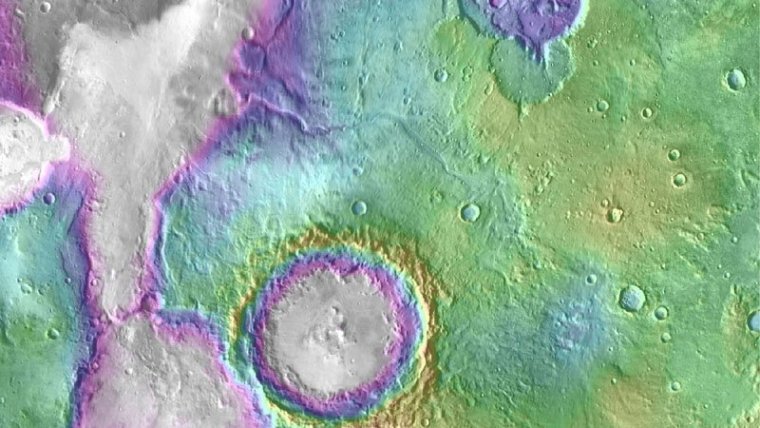| News / Space News |
Some Ancient Mars Lakes Came Long After Others
NASA | SEPTEMBER 18, 2016
Lakes and snowmelt-fed streams on Mars formed much later than previously thought possible, according to new findings using data primarily from NASA's Mars Reconnaissance Orbiter.

Valleys much younger than well-known ancient valley networks on Mars are evident near the informally named "Heart Lake" on Mars. ![]()
The recently discovered lakes and streams appeared roughly a billion years after a well-documented, earlier era of wet conditions on ancient Mars.
These results provide insight into the climate history of the Red Planet and suggest the surface conditions at this later time may also have been suitable for microbial life.
"We discovered valleys that carried water into lake basins," said Sharon Wilson of the Smithsonian Institution, Washington, and the University of Virginia, Charlottesville. "Several lake basins filled and overflowed, indicating there was a considerable amount of water on the landscape during this time."
Wilson and colleagues found evidence of these features in Mars' northern Arabia Terra region.
To bracket the time period when the fresh shallow valleys in Arabia Terra formed, scientists started with age estimates for 22 impact craters in the area.
They assessed whether or not the valleys carved into the blankets of surrounding debris ejected from the craters, as an indicator of whether the valleys are older or younger than the craters.
They concluded that this fairly wet period on Mars likely occurred between two and three billion years ago, long after it is generally thought that most of Mars' original atmosphere had been lost and most of the remaining water on the planet had frozen.
Similar valleys occur elsewhere on Mars between about 35 and 42 degrees latitude, both north and south of the equator. The similar appearance and widespread nature of these fresh, shallow valleys on Mars suggest they formed on a global scale rather than a local or regional scale.
YOU MAY ALSO LIKE


